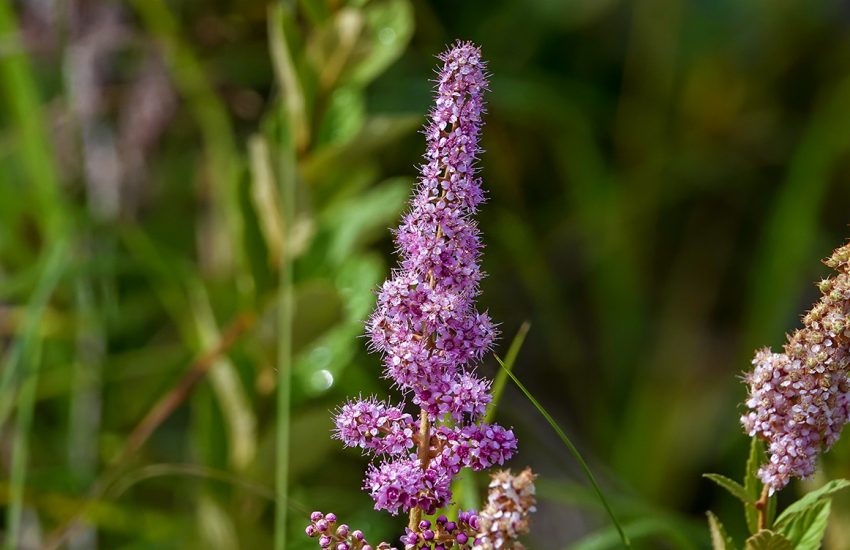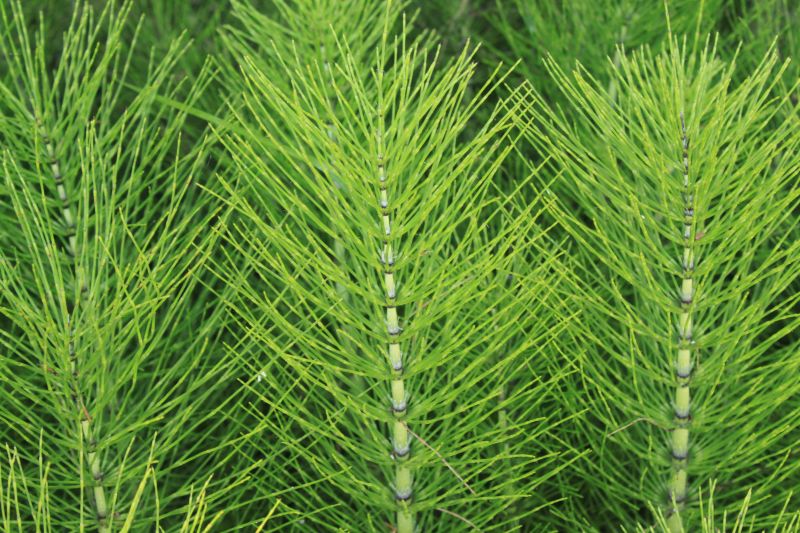New England Native Flowering Shrubs for Your Yard
We compiled a collection of native flowering shrubs that are native to the northeastern United States. The shrubs are an ideal addition to any landscaping or gardening project. They come in a wide variety of colors, sizes, and shapes and can be found in both sunny and shady areas. Many of them flower throughout the spring and summer, which makes them a great choice for landscapes that need a burst of color during these months. Here are some of the flowering shrubs:
Clethra alnifolia

Clethra alnifolia, also known as summersweet or pink clethra, is a popular flowering shrub that is native to New England. It has bottlebrush-like flower spikes and a delightful fragrance. The shrub has many benefits for landscaping and gardening. Its bright pink flowers provide color to the landscape, it can be used as a hedge or border, it’s disease resistant, and its leaves are good for composting.
Clethra alnifolia is part of the holly family, which includes other popular plants like holly, bayberry, and cotoneaster. It is a deciduous flowering shrub that reaches around 3 to 4 feet tall with a spread of 6–8 feet. The plant needs full sun to thrive and will only grow in average, well-drained soil with a pH of 6.0 or greater. It is remarkably disease-resistant and easy to care for, making it a good option for the novice gardener. You can use this shrub as a hedge up against another flowering bush like lavender for a beautiful, fragrant border. Summersweet can also be used as a ground cover or specimen plant in a sunny spot.
Fothergilla Major (mountain witch Alder)
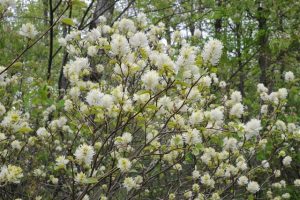
Fothergilla major is a flowering plant that has an unusual appearance. It is a deciduous shrub that flowers in the fall. This plant can be found in the eastern United States and Canada. The leaves are leathery, and the flowers are bottlebrush-like and white, with yellow corolla lobes that turn pinkish as they age. It is best known for its delightful fragrance and its unusual blue-green foliage. This plant is fairly easy to grow in most regions of the United States. It can be grown in sun or shade but requires well-drained soil with a pH of 6.2 to 8.2, and it will thrive in a variety of soil types including clay, loam, or sand as long as they are well drained.
The shrub is used for landscaping and gardening purposes because it has a dense, woody root system that does not require much watering once established. It has beautiful foliage that changes colors throughout the year, making it a great addition to any garden or landscape design. The leaves are densely toothed and may be smooth or rough-textured. It grows up to 6 feet tall. In warmer regions, it can reach 8 feet or more in height.
Heptacodium Miconioides (Seven Son Flower)
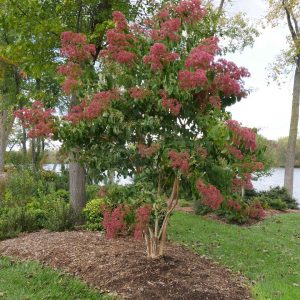
Heptacodium Miconioides is a native New England flowering shrub that is commonly referred to as the Seven Son Flower. The plant has seven white flowers with a yellow center that bloom in early summer on 1-foot-tall stems. The flowers are followed by shiny black berries that persist into the fall.
The Seven Son Flower is often used in dry shade gardens to add a visual element of dimension and contrast. It is a fast-growing native shrub with a dense, bushy habit that can grow up to 5 feet tall by 3 feet wide, with a full-grown spread of 1 foot. The plant grows in clay soil and dries out quickly, so provide it with plenty of water during the growing season.
The shrubs are typically used for landscaping purposes because they are hardy, low-maintenance plants that tolerate heavy shade. They also have the added benefit of attracting pollinators such as bees and butterflies, which contribute to the overall health of the ecosystem.
Hydrangea Paniculata (Limelight)
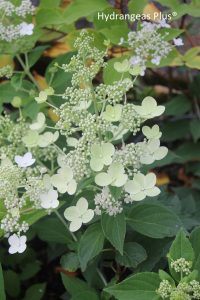
This shrub is a popular garden flower that is often used in bouquets, but it can also be used as an ornamental plant. It is commonly found in the southern United States and has been naturalized in most parts of the world. Hydrangea paniculata is a flowering shrub that grows up to 6 feet tall with flowers that are white or pink. The leaves are deep green and have a slightly wavy edge. It blooms in early spring and produces clusters of small flowers on long stems that are perfect for decoration. This plant is often used as a decorative plant in gardens because it can be shaped into organic shapes such as spheres, urns, and pyramids. The shrub has flowers that come in a range of colors and is widely used in bouquets due to its sweet fragrance.
Ilex verticillata (winterberry)
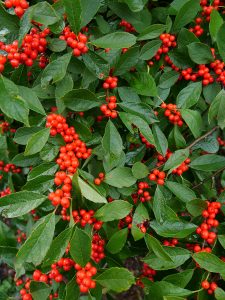
Ilex verticillata is a shrub that is native to New England. It has small clusters of white flowers and berries that turn red in the winter. It is a deciduous shrub that grows in clusters of 3-6 stems per cluster. It has small clusters of white flowers and berries that turn red in the winter. The leaves are opposite and have an entire margin with serrated edges.
The leaves are also hairless, which makes them feel rough to the touch, but they are not prickly like other Ilex species. Ilex verticillata is good for landscaping because it can grow into a large bush, it can be easily pruned into a low hedge or even into topiary shapes, and it has attractive foliage and flowers that can be used in flower arrangements.
Winterberry is a popular plant in the Northern United States because of its ability to withstand harsh winter conditions and grow back with vigor. It is also attractive, with shiny green leaves that turn red during the autumn months. The winterberry’s glossy leaves provide homes for many types of wildlife, such as birds and butterflies, which use them as an insect-repelling shelter.
Ajuga reptans (capet bugle)
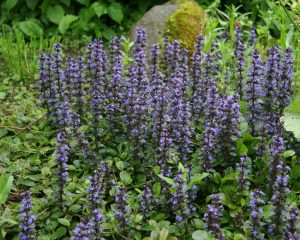
Ajuga reptans is a shrub that grows in the wild and can be found in North America, Europe, Asia, and Australia. The plant has small blue flowers with a bright red center that grows on long stems. It is also called a cape bugle because of its shape. The leaves are ovate to elliptic, entire or sparsely toothed, and the stem is usually longer than the leaves. The flowers have a long, narrow calyx with five pointed lobes and five long red petals. The plant also grows to be about 2-3 feet tall and has spiny leaves on the ends of its branches. Ajuga reptans is a shrub that is usually found in dry, rocky places.
Aesculus Parviflora (Bottlebrush Buckeye)
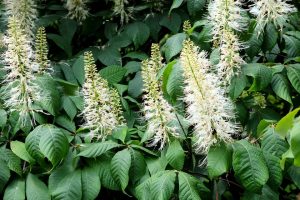
The bottlebrush buckeye is a native plant of New England and blooms with erect white flowers in late summer. It has a beautiful shape that can be used to create a focal point in the garden. Native New England plants are not only beautiful but also add value to the landscape. They provide habitat for wildlife and have medicinal properties.
Bottlebrush buckeyes are often used as a focal point in the garden or as an ornamental flower. They can be planted around your home or business to add beauty, value, and wildlife habitat. It grows to a height of about 12 inches and has white flowers in late summer that are about 3 inches long. Its leaves have a light-green color and form a tight, high-sided spiral around the stem. The leaf shape is unlike any other buckeye plant, making it distinctive from others in its genus. The leaves are coated in fine hairs that give the plant a smooth texture.
Arctostaphylos Uva-Ursi (bearberry)
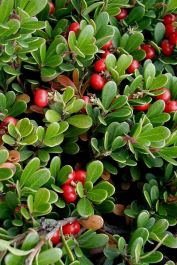
Bearberry is a low-growing, deciduous shrub that can grow to about two and a half feet tall. It has heart-shaped leaves and white to pink flowers that turn into lantern-shaped fruits. Bearberry is an evergreen shrub native to the Mediterranean region. The plant grows in a wide variety of soils, from dry to wet, and tolerates full sun or partial shade.
It is often used as a groundcover in gardens because it does not require much water or attention for many years. Bearberry may be differentiated from other species in the genus by its heart-shaped leaves. The scientific name for “ursine” (bear-berry) is “Arctostaphylos uva-ursi”.
Kalmia latifolia (American Laurel)
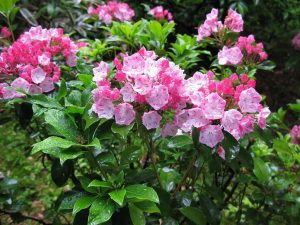
Kalmia latifolia is a broadleaf evergreen shrub that grows up to 3-5 meters in height. It has clusters of bright pale pink flowers that are bell-shaped, which are noticeable even in the winter. The flowers come out of the leaf axils in early spring, with a few remaining into winter. They are about 2 centimeters wide and have a deep center that is surrounded by five raised lobes.
This shrub is native to North America and is also called American Laurel or Kalmia angustifolia. It is found on dry slopes, open woodlands, and rocky outcrops. It grows well in full sun or partial shade, but it can tolerate some drought conditions as well. It is the most beautiful plant to have in your garden. The leaves are evergreen and opposite, while the stem is erect, solid, and angular.
Vaccinium angustifolium
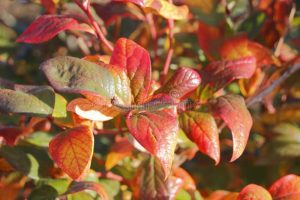
The Vaccinium angustifolium is a deciduous, perennial shrub native to a wide range of habitats in mountain ranges in the southeastern United States. This low, spreading shrub has delicate, bell-shaped flowers in spring that turn from reddish-green to blue-green in summer. In the fall, the leaves turn scarlet red before falling off. In winter, the leaves turn a light yellow-green.
The flowers are hermaphroditic, meaning that the plant produces both male and female flowers. This allows for self-pollination, which is necessary for increasing the population of any particular species. This shrub makes an ideal ornamental for the perennial garden. The shrub can be used to create borders for perennial gardens, to contrast with other plants in your garden, and to provide a nice white winter flower show. This plant can grow to be up to 2 feet tall and wide, which makes it an ideal choice for a large mixed perennial border. Its fall foliage is spectacular.
Yucca filamentosa (Adams needle)
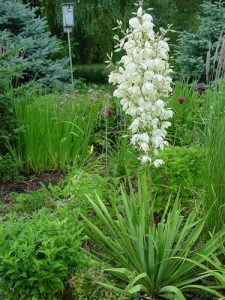
Yucca filamentosa is a broadleaf evergreen shrub that can be found mostly in the southeastern United States. This plant is a beautiful addition to any garden and can be used for landscaping as well as being ornamental. It can grow up to 8 feet in height and has long, green leaves that are very thick with needle-like points at the end. The leaves are very dark green and somewhat shiny. They can have a reddish tint to them in the fall, which is when they change color. It has clusters of small white flowers with yellow centers that will bloom from May to June.
The flowers are beautiful. This plant is known for its growth rate, which is pretty fast. The plant is considered to be relatively hardy but should not be exposed to frost. It prefers full sun and wet or dry soil but does well in partial shade as well. The plant has a very interesting root system that allows it to take up water from the top of the soil and then release it below the surface of the ground where it will hydrate the roots and the rest of the plant. Some people are growing this plant for erosion control, which is very beneficial in many areas of the southeastern United States.
Calycanthus Floridus (Carolina Allspice)
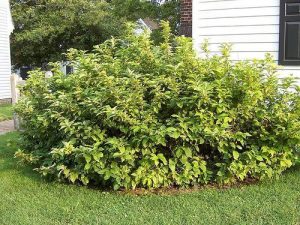
Calycanthus Floridus is a shrub native to the southeastern United States. It has small, reddish-brown flowers with a sweet fragrance. Calycanthus Floridus is also known as Carolina Allspice. It is a deciduous shrub that grows up to 7 feet tall and has small, reddish-brown flowers with a sweet fragrance. The leaves are alternate and well-branched, and the bark of the trunk is grayish-black.
The leaves are opposite, with glossy green on top and silver underneath, and are 0.3 to 3 centimeters long. They are ovate-triangular, with a rounded base and a pointy tip, and smooth on both the upper surface and the margins. The shrub is commonly used as an ornamental shrub in gardens, mixed hedge plantings, or as a specimen tree in parks and larger landscapes.
The flowers are reddish-brown, 1/2 inch wide, and grow in clusters of 3–7 blooms on short stems. They bloom from May through June. It is an upright shrub that can be pruned to retain its shape or it may be kept in a tree form by removing the lower branches. The Carolina allspice is an evergreen shrub that has a moderate growth rate.
The shrub thrives in rich, moist, well-drained loams and soils with a pH level of 6.0-7.5. The Carolina allspice plant is well suited for growing in the ground and can be used as a specimen or hedge. It is also well-suited for xeriscaping, which is landscaping that seeks to make use of drought-tolerant plants.

